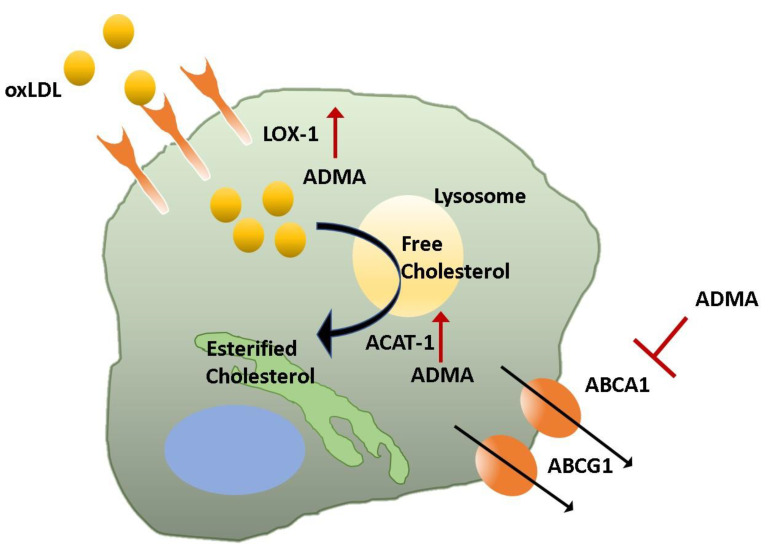Figure 2.
ADMA increases the generation of foam cells. Macrophages play a key role in scavenging oxidized lipids within the vessel wall; however, in atherosclerotic plaques, excessive lipid accumulation leads to the formation of foam cells. Macrophages express scavenger receptors, including lectin-like, oxidized, lipoprotein receptor-1 (LOX-1), which mediate the uptake of oxidized LDL (oxLDL). Once within the macrophage, oxLDL is taken up by the lysosome and converted to free cholesterol. Acetyl coenzyme A: cholesterol aceyltransferase-1 (ACAT) esterifies the cholesterol to be stored within the endoplasmic reticulum. Asymmetric dimethylarginine (ADMA) treatment of macrophages upregulates LOX-1 and ACAT-1, increasing cholesterol storage. ADMA also downregulates the expression of key ATP-binding cassette (ABC) transporters ABCA1 and ABCG1, thereby reducing cholesterol efflux from the macrophage and contributing to foam cell formation.

